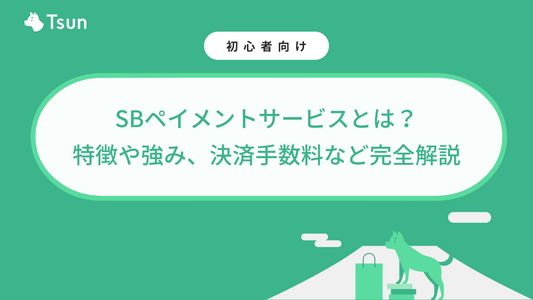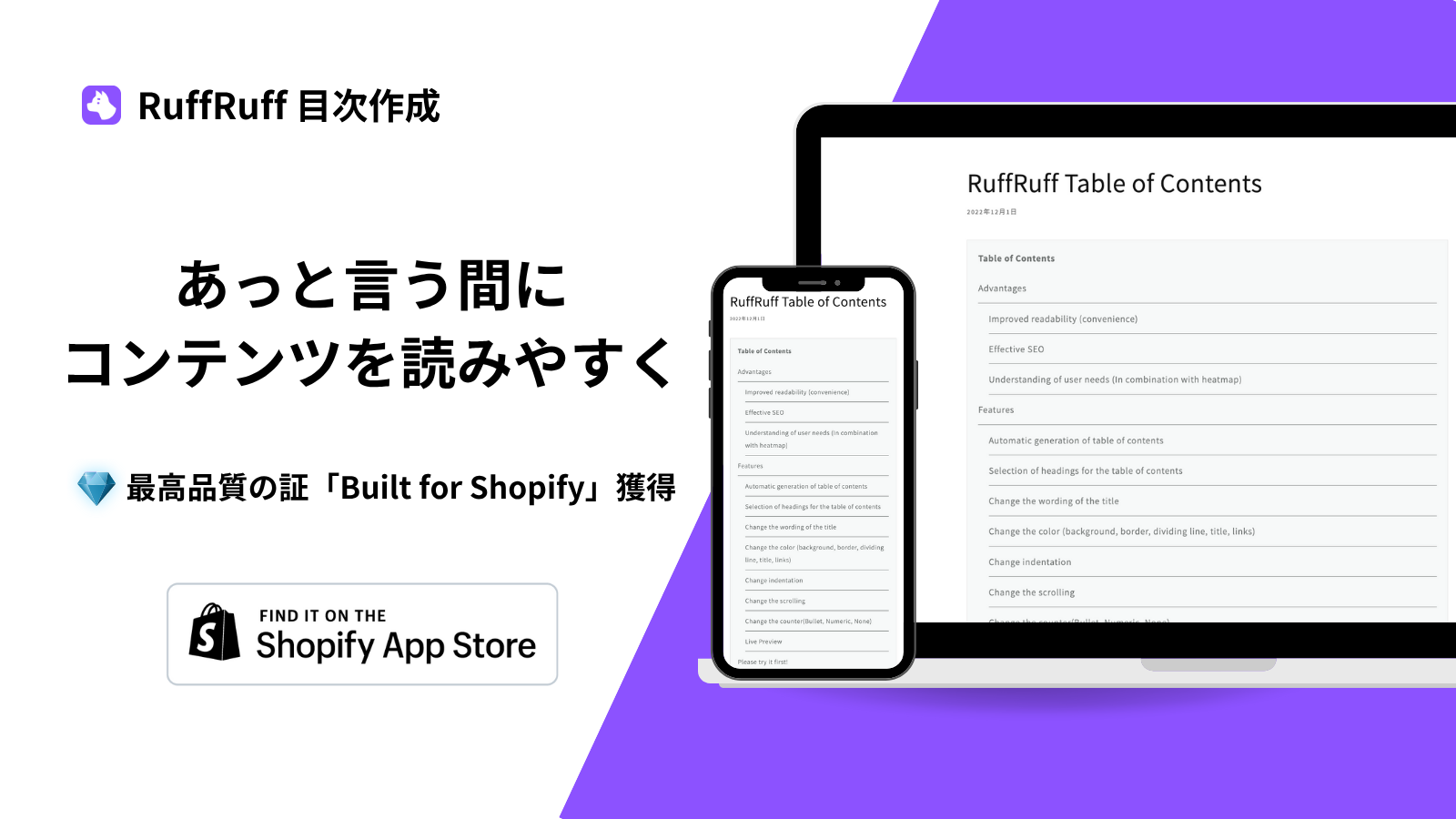Rewriting blog posts is an essential part of running an owned media business. Rewrite is an English word that means "rewrite", but it does not mean that you should just rewrite the article. In this article, we will explain how to rewrite blog posts in 6 steps, and also introduce tips and precautions.
If you haven't written a blog post on your Shopify site yet, please refer to this article.
Advantages of writing blog posts on Shopify (using the blog feature)
What is a blog post rewrite?
Article rewriting is a measure to improve the quality of articles by brushing up articles that have already been released. Generally, it is done for the purpose of improving SEO evaluation to improve search ranking and increasing the number of conversions.
Advantages and Effects of Rewriting
Article rewriting has two main benefits. Both are essential metrics for evaluating article quality.
- Improved SEO ratings
- Improved CVR
I will explain each one in detail below.
Improved SEO ratings
By rewriting and updating your blog post, Google's algorithm will evaluate it again. If you can receive a higher evaluation than before the rewrite, you can expect an effect such as an increase in search ranking. If the search ranking goes up, the article will be more likely to be clicked from the search results, and you can expect an increase in the number of PV (page views).
To improve your SEO rating, it is important to write articles that users will be more satisfied with. Instead of aiming for articles that Google likes, aim for articles that users will like.
In the article below, we will explain the benefits of SEO and SEO measures that can be done with Shopify. please refer.
Advantages and disadvantages of SEO | SEO measures that can be done with Shopify
Improved CVR
CVR (Conversion Rate) is the ratio of the number of users who read the blog post to conversion (target result).
Conversions vary depending on the purpose of the website or blog post, and include product purchases, service applications, document requests, and membership registration.
For example, if the conversion of a blog article is a “sample application” for a supplement, by clearly stating that the application is simple and easy to try, and that there is no charge other than a specific fee, the hurdles to applying will be lowered and conversion will be easier. will be
How to rewrite [6 STEP]
Learn how to rewrite articles in 6 steps. Proper rewriting rather than blind rewriting will yield efficient results.
- ① Clarify the purpose of the rewrite
- ② Select articles to rewrite
- (3) Analyze competitor sites
- ④ Analyze the article
- ⑤ Rewrite the article
- ⑥ Verify the effect of rewriting
I will explain each one in detail below.
① Clarify the purpose of the rewrite
Before embarking on an article rewrite, be clear about the purpose of the rewrite.
By setting goals such as "Improve search ranking by improving SEO evaluation" and "Increase product appeal and increase conversion rate", it is useful for verifying the effect after rewriting.
Example of purpose for rewriting
- Improve your SEO rating and increase your search ranking
- Increase product appeal and increase conversion rate
- Increase the appeal of titles and headlines and increase CTR
etc…
② Select articles to rewrite
Not all articles need to be rewritten. Check the indicators such as "search ranking", "CTA button click rate", and "search result CTR (click-through rate)", and select articles that can be judged to have good rewriting results. In particular, articles that rank 11th to 20th for countermeasure keywords are highly likely to be ranked on the first page (1st to 10th) of search results by rewriting.
These metrics can be found in Google Search Console and Google Analytics.
Examples of criteria for selecting articles to be rewritten
- Search ranking of countermeasure keywords is 11th to 20th
- Low CTA button click-through rate compared to other articles
- Low CTR (click-through rate) of search results
etc…
(3) Analyze competitor sites
Competitor sites that are ranked high for the countermeasure keywords are helpful when deciding on the content of the rewrite. The fact that it is displayed at the top means that it is an article that Google judges as "meeting the user's needs". Check the competing sites that are ranked high for the keywords you want to improve your search ranking, and look for elements that you can absorb into your articles.
However, even if it is good content, you should never “copy and paste” it. Use without the author's permission may constitute an infringement of copyright.
Copied content may also be penalized by Google for poor quality content.
Competitive analysis points
- Keywords often used in competitor titles
- Competitor headline structure
- Are there user needs that your blog post doesn't address?
etc…
④ Analyze the article
Once you've analyzed your competitors' sites, analyze your own articles to see if there's anything you can do better. Even if you wrote an article yourself, you should be able to find improvements that you didn't notice last time by looking back.
The analysis of the article performed here is the content that can be said to be the basics of SEO. It is also important to go back to the basics and read the article with the user's feelings.
Points of article analysis
- meet user needs
- Can the user's goals be achieved with minimal effort?
- Is expertise, authoritativeness, and credibility guaranteed?
- Are the titles and descriptions appropriate?
For analyzing articles, we recommend the behavior analysis/heat map tool “Clarity” and the access analysis tool “Google Analytics 4 (GA4)” because they are free and highly functional.
The article below explains how to introduce the behavior analysis and heat map tool “Clarity”. Please refer to us.
How to introduce the heat map tool "Clarity"
The following article explains how to install the access analysis tool “Google Analytics 4 (GA4)”. Please refer to us.
How to set up Google Analytics 4 (GA4)
⑤ Rewrite the article
After finding improvements through analysis of competitor sites and articles, we will actually rewrite the article. When rewriting, you can incorporate all the improvements you find, but it is recommended to check the effect of the rewrite while making small changes.
In the unlikely event that the rewrite backfires, you run the risk of having to undo everything if you do a major rewrite.
Also, by making small corrections, you can proceed with the rewriting of multiple articles and increase the frequency of article updates.
⑥ Verify the effect of rewriting
After rewriting the article, compare the search ranking, CVR (conversion rate), CTR (click-through rate), and other indicators before and after the rewrite to check whether the rewrite is effective and whether the purpose of the rewrite has been achieved. will do. This verification result can be used for the next rewrite.
However, it is not all about the search ranking going up, it may not change or it may go down. A drop in search rankings means that a well-intentioned rewrite may have resulted in a drop in quality. In that case, you must consider returning to the state before rewriting.
Article rewrite tips and notes
I will explain what to pay attention to when rewriting articles and what to check before rewriting. Please do not forget this as it is important for the evaluation of the article.
- Check user needs
- Devise ways to satisfy EEAT
- Increase content coverage
- Add unique content
- Consolidate articles with duplicate content
- Install internal links
- Beware of Copyright Law Violation
Check user needs
Let's reconfirm what the users who searched for the countermeasure keyword are looking for. The basis of the article is "to respond to the needs of the user". Keep in mind that as you repeat the rewrites, the content may become irrelevant.
Devise ways to satisfy EEAT

EEAT is the evaluation criteria that Google places importance on when evaluating web pages. Taken from the initials of the English words Expertise, Experience, Authoritativeness, and TrustWorthiness. Are you receiving an evaluation?"
There are many possible ways to meet EEAT. For example, enriching author profiles to meet credibility. What you can do depends on the theme and management method of each site, so think about what you can do with your own site.
The article below explains the benefits of providing author information and author information and what to write in your profile, so please refer to it.
Advantages of publishing author information | What should you write in your profile?
Increase content coverage
Comprehensiveness means whether the information required by the user is described without omission. Articles with a high degree of comprehensiveness are more likely to be satisfied by users, and are more likely to be evaluated as highly specialized articles.
However, it is not enough to have a lot of information, and it is important to properly include only the information that users need. Be careful not to include information blindly.
Add unique content
Articles with only the same information as a competitor's site have no content value. Let's be conscious of showing originality as a point that can be differentiated from competing sites.
The way to show originality is not only to put information that is not listed on the competitor's site. Text that is easier to read than competing sites, tables and graphs that are easier to see, etc., are also unique enough to benefit users.
The point is "differentiation from competing sites" and "whether it will benefit users". Think about what you can do with your article.
Consolidate articles with duplicate content
When rewriting, the content of the article on the same theme may be duplicated. If there are such duplicate pages, the evaluation will be distributed to each article and it will be difficult to be displayed at the top.
In this case, summarize the content into the article with the highest evaluation, and set a redirect from the URL of the article that is no longer needed to the summarized article. By summarizing articles, scattered evaluations will be concentrated and comprehensiveness will be improved, making it easier to be displayed at the top.
Install internal links
Internal links are links to pages within your site. Installing internal links to content related to the article makes it easier for users to reach the information they want, which leads to user satisfaction and Google's evaluation.
Imagine what kind of information the user wants next, and try to set up an internal link that is perfect for that.
Please refer to the following article for specific internal link countermeasures.
Benefits of creating a table of contents for your blog posts
Advantages of listing tags in blog posts | How to add effective tags
Benefits of having a breadcrumb list
Beware of Copyright Law Violation
It is not limited to rewriting, but when creating articles, it is necessary to be careful not to violate the copyright law. With some exceptions, all content published on the WEB is a copyrighted work stipulated by copyright law.
In particular, when rewriting, you often refer to competing sites, so be careful not to cite or copy-paste incorrect methods.
4 Recommended Tools to Help You Rewrite Articles
When I rewrite the article, I will introduce the tools that I actually use. All of them can be used for free, so if you have a tool that you haven't used, please try using it once.
Google Search Console
Google Search Console is a free tool that allows you to see the ranking for each keyword, the number of times your page has been displayed, and the number of clicks.
You can also notify Google of updates by indexing when rewriting or creating a new article. It can also help detect other issues, such as site usability.
Google Search Console: https://search.google.com/search-console/about
Google Analytics
Google Analytics is a website access analysis tool. It is possible to measure the number of visits to the site for each page, and there are various indicators such as the number of inflow sources and conversions. Especially when rewriting with the goal of improving CVR (conversion rate), it is important to use these tools to measure the effect.
Google Analytics: https://www.google.com/analytics
The following article introduces how to introduce Google Analytics 4 (GA4) to Shopify.
How to set up Google Analytics 4 (GA4) on Shopify
Clarity
Clarity is a free heatmap tool from Microsoft. You can analyze how far the users who visited the site read, which buttons they clicked, etc.
In addition, there is a function called recording, and you can record the screen of the user reading the article as a video as it is.
Clarity: https://clarity.microsoft.com
The following article introduces how to introduce Clarity to Shopify.
Google Spreadsheet
Google Sheets is a spreadsheet web application provided by Google. Anyone with a Google account can use it, and multiple people can edit it at the same time, making it easy to work in a team and easy to share with others.
It can be used for various purposes such as organizing countermeasure keywords and headlines, and managing article grades.
Article rewrite FAQ
How to prioritize rewrites?
A. We recommend that you rewrite articles that are ranked 11th to 20th in the search ranking of the countermeasure keyword, starting with articles with high search volume. There is a big difference in the number of inflows between the 1st and 2nd pages of search results.
When and how often to rewrite?
A. It's better to update the article on a newer date, but that doesn't mean you have to update it every day. Rewrite when there is a purpose, such as when the information is outdated, when there is new information, or when rewriting is likely to produce results.
How important is rewriting?
A. If the update date of the article is old, it means that the information posted is old. Users want new information, so Google generally values new articles more. Rewriting is important for improving search rankings and for maintaining high rankings.
How do I choose which articles to rewrite?
A. Refer to the "search ranking", "CTA button click rate", "search result CTR (click-through rate)", etc., and select articles that are likely to produce results.
Examples of criteria for selecting articles to be rewritten
- Search ranking of countermeasure keywords is 11th to 20th
- Low CTA button click-through rate compared to other articles
- Low CTR (click-through rate) of search results
What are the tips and points for rewrite work?
A.The trick to rewriting is to perform everything from analysis to rewriting and effect measurement in order. Instead of rewriting it somehow, let's carefully follow the methods introduced in this article one by one.
When will the effect of the rewrite appear?
A.Changes in search rankings do not necessarily appear immediately. It doesn't make sense to rewrite it over and over again just because it won't improve your ranking. However, since CVR (conversion rate) changes depending on the behavior of users who read the article, changes appear immediately.
What should I be aware of before rewriting?
A.Be aware of clarifying the purpose of the rewrite. If you forget the purpose while working, it may lead to an increase in work time, or you may not be able to measure the correct effect.
For SEO measures and writing articles that sell, go to Tsun
Tsun Co., Ltd. supports the growth of owned media and EC sites. We will help you create a system that sells, including SEO measures and writing for articles.
Please contact Tsun first.






















